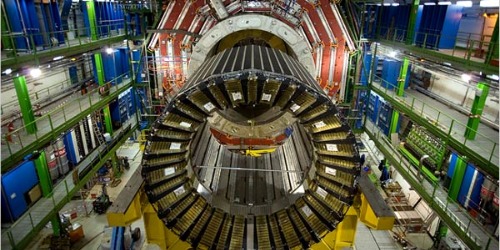A team of Israeli and international scientists believe they may have solved one of the biggest riddles of physics today.

Scientists from Israel and other countries claimed a breakthrough last week in solving one of the biggest riddles of physics: What happened to all the antimatter that has vanished since the Big Bang?
Theory posits that matter and antimatter were created in equal amounts at the moment of the Big Bang, which spawned the universe some 13.7 billion years ago. But while matter – defined as having mass and taking up space – went on to become the building block of everything that exists, antimatter has all but disappeared except in the lab.
According to the Associated Press, the scientists trapped 38 anti-hydrogen for about one tenth of a second. The results were published in a paper submitted to the respected science journal Nature.
Since their first success, the team has managed to hold the anti-atoms even longer.
Since 2002, researchers have managed to form anti-atoms, but until recently none could be trapped for long enough to study them, because atoms made of antimatter and matter annihilate each other in a burst of energy upon contact.
Scientists are interested in producing antimatter in larger quantities to gain insight into fundamental physical laws.
Michio Kaku, physicist and author of Physics of the Impossible, told PCMag, “This is the first major step in a long journey… Eventually, we may go to the stars.”
Further into the future, Kaku believes that antimatter could be used as the “ultimate rocket fuel,” because it’s 100 percent efficient – all of the mass is converted to energy. By contrast, thermonuclear bombs only use about 1%.
“One of the main uses of antimatter would be a starship,” said Kaku. “Because you want concentrated energy. And you can’t get more concentrated than antimatter.”
He concedes that producing large quantities of antimatter is impossible today, but with the right developments, he thinks it could become a reality. “These machines were not specifically designed to create antimatter. These machines are all-purpose machines. But with time, mass production, better technology, and dedicated machines we could reduce costs considerably.”
When queried as to his views on long-term applications of antimatter, such as antimatter-powered starships, Lawrence Krauss, a theoretical physicist at Arizona State University and author of The Physics of Star Trek, says, “Don’t hold your breath.”
American scientist Jeffrey Hangst, spokesman for the team at CERN, downplays speculation that antimatter might someday be harnessed as a source of energy, or to create a powerful weapon, an idea popularized in Dan Brown’s best-selling novel Angels and Demons.
“It would take longer than the age of the universe to make one gram of antimatter,” he says, calling the process “a losing proposition because it takes much more energy to make antimatter than you get out of it.”












